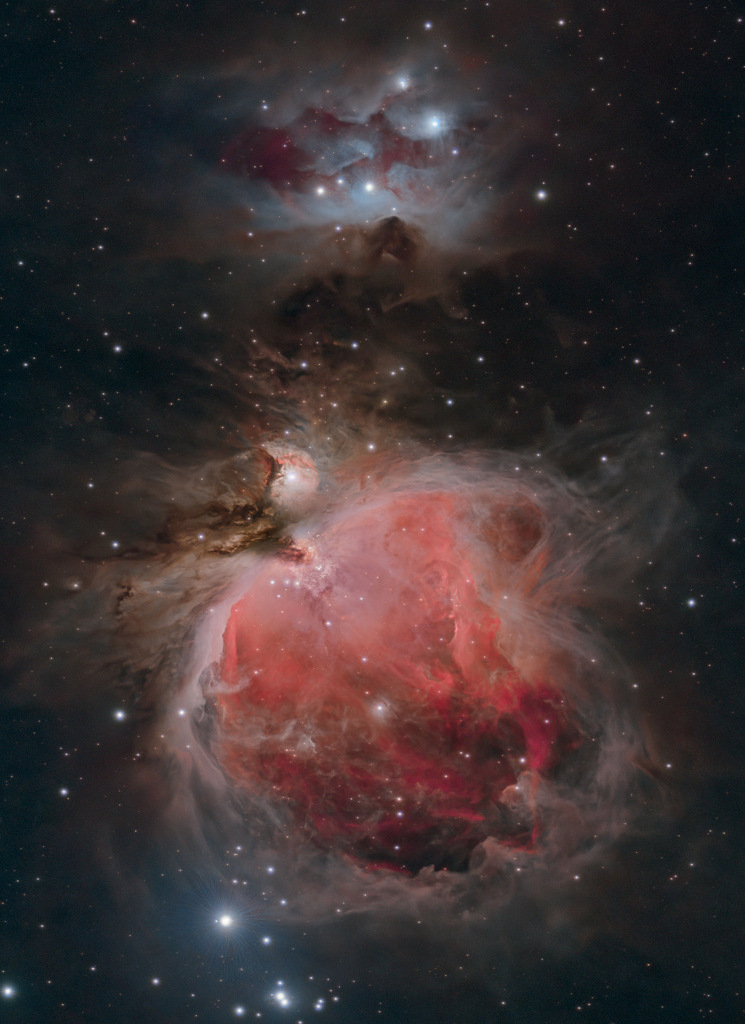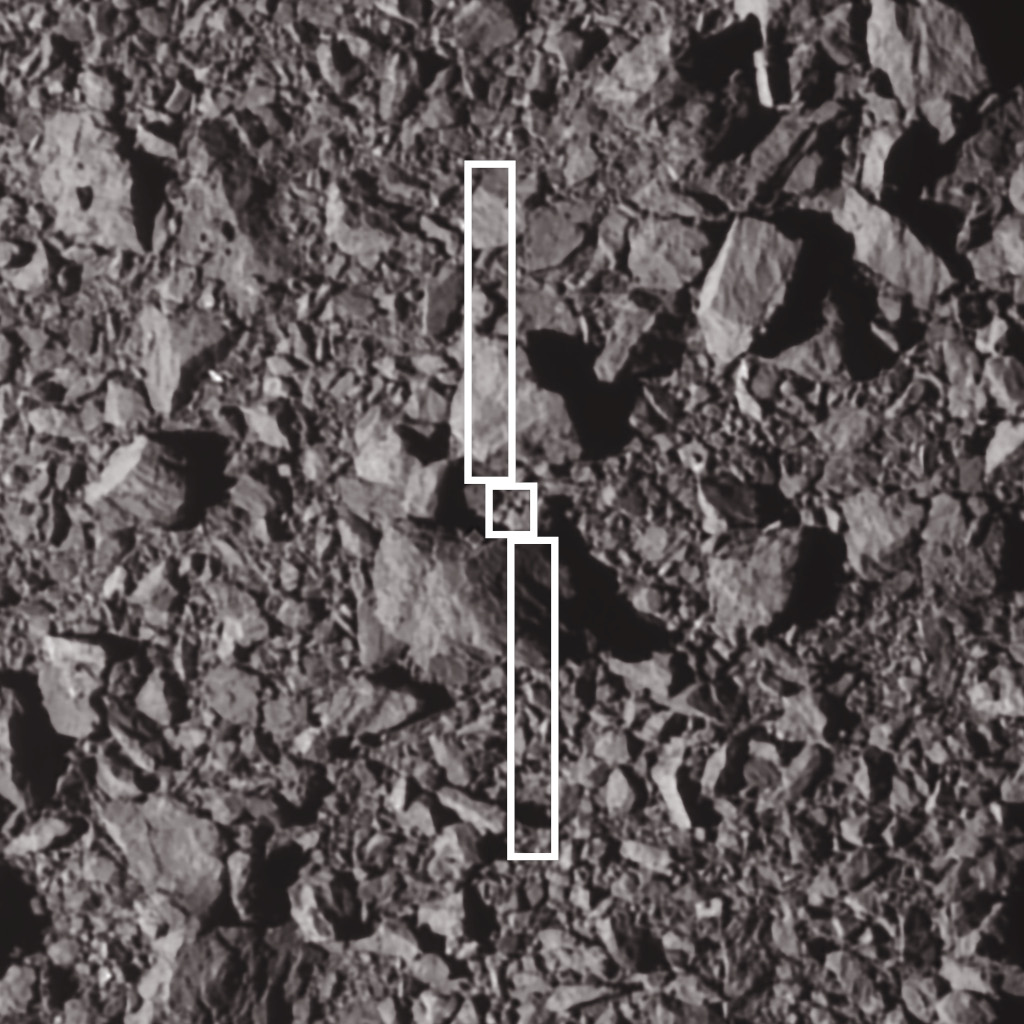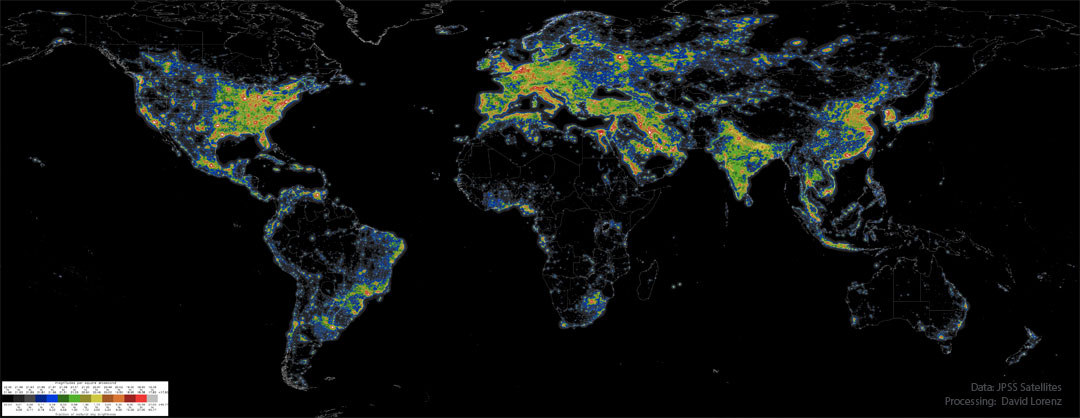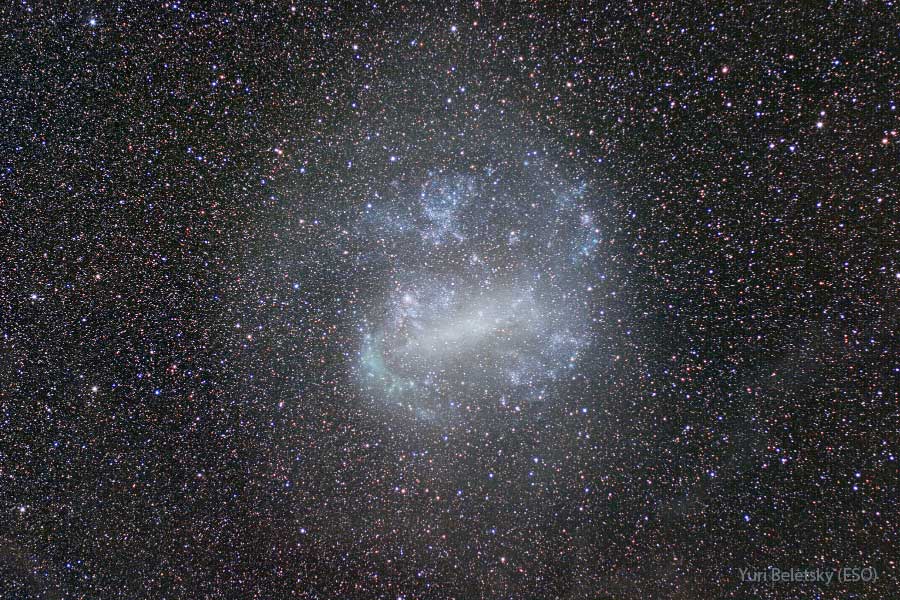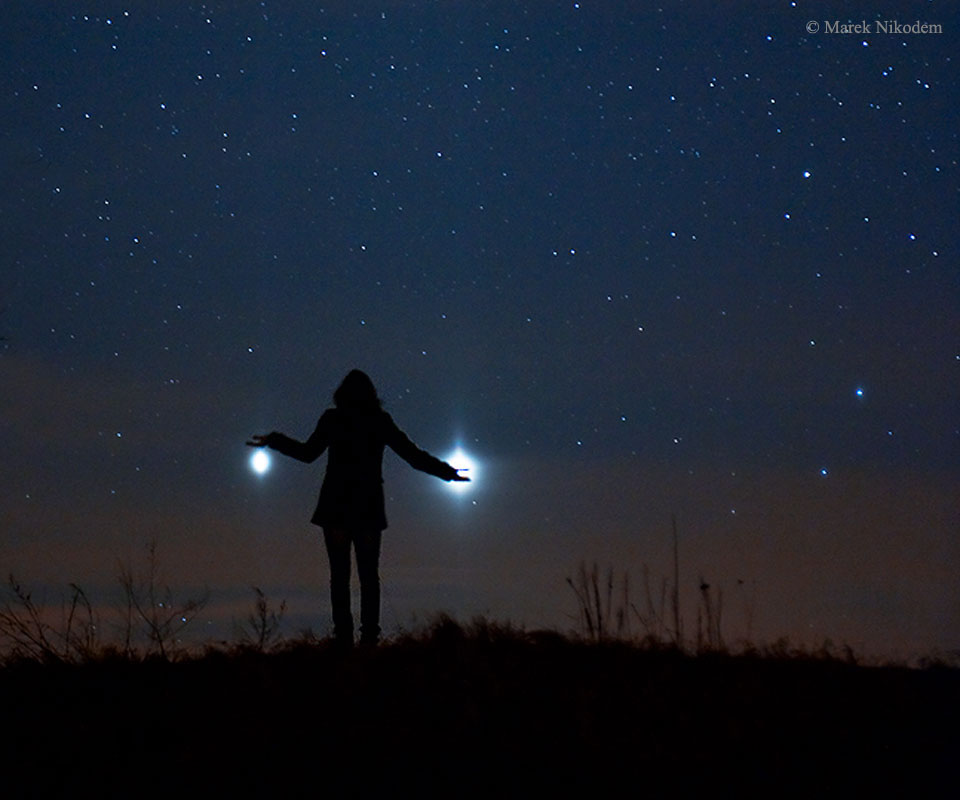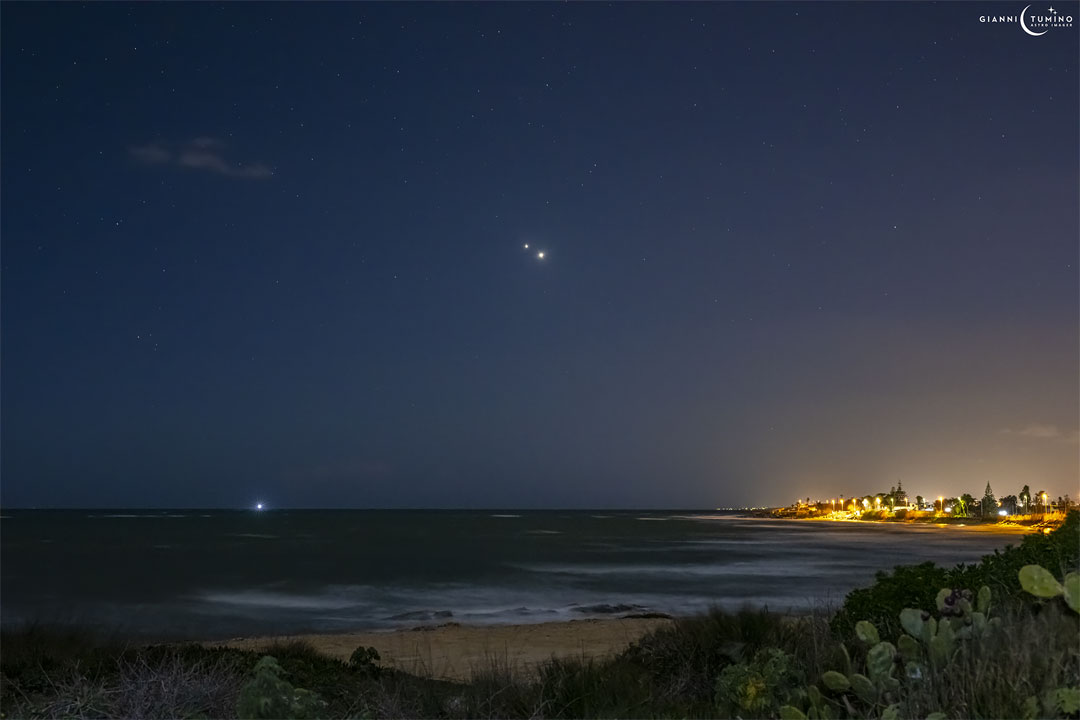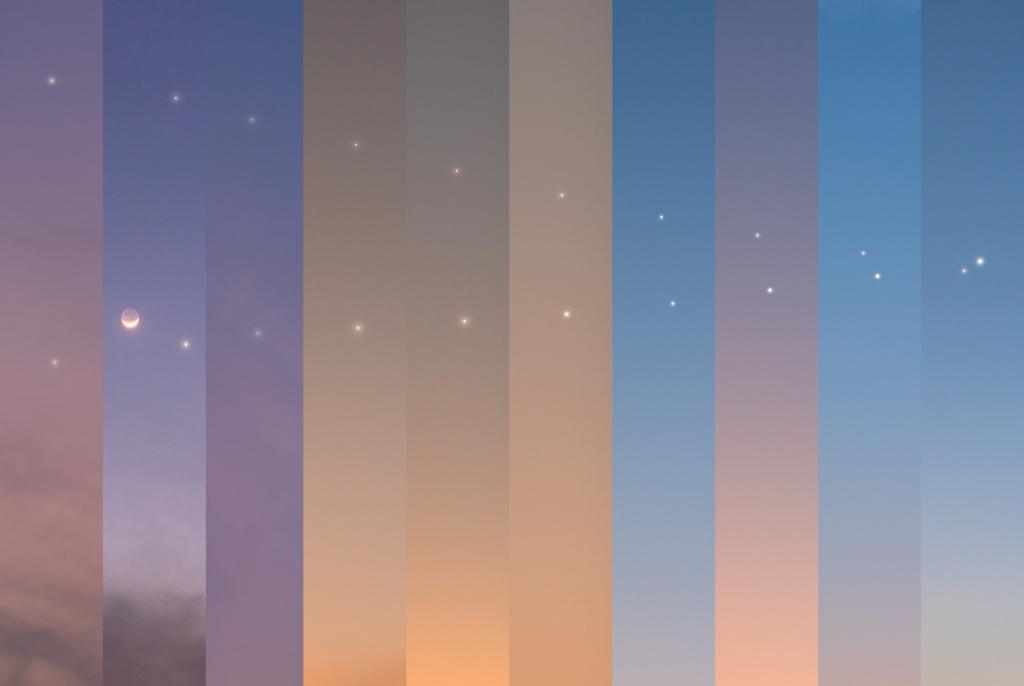Nombre total de pages vues
11/03/2023
PALEONTOLOGIE - Le hynéria - Un monstre sous-marin
ASTRONOMY - Orion and the Running Man
2023 March 10
Image Credit & Copyright: Abraham Jones
Explanation: Few cosmic vistas excite the imagination like The Great Nebula in Orion. Visible as a faint celestial smudge to the naked-eye, the nearest large star-forming region sprawls across this sharp telescopic image, recorded on a cold January night in dark skies from West Virginia, planet Earth. Also known as M42, the Orion Nebula's glowing gas surrounds hot, young stars. About 40 light-years across, it lies at the edge of an immense interstellar molecular cloud only 1,500 light-years away within the same spiral arm of our Milky Way galaxy as the Sun. Along with dusty bluish reflection nebula NGC 1977 and friends near the top of the frame, the eye-catching nebulae represent only a small fraction of our galactic neighborhood's wealth of star-forming material. Within the well-studied stellar nursery, astronomers have also identified what appear to be numerous infant solar systems.
09/03/2023
ASTRONOMY - DART vs Dimorphos
023 March 9
Image Credit: NASA, Johns Hopkins APL, DART
Explanation: On the first planetary defense test mission from planet Earth, the DART spacecraft captured this close-up on 26 September 2022, three seconds before slamming into the surface of asteroid moonlet Dimorphos. The spacecraft's outline with two long solar panels is traced at its projected point of impact between two boulders. The larger boulder is about 6.5 meters across. While the DART (Double Asteroid Redirection Test) spacecraft had a mass of some 570 kilograms, the estimated mass of Dimorphos, the smaller member of a near-Earth binary asteroid system, was about 5 billion kilograms. The direct kinetic impact of the spacecraft measurably altered the speed of Dimorphos by a fraction of a percent, reducing its 12 hour orbital period around its larger companion asteroid 65803 Didymos by about 33 minutes. Beyond successfully demonstrating a technique to change an asteroid's orbit that can prevent future asteroid strikes on planet Earth, the planetary-scale impact experiment has given the 150-meter-sized Dimorphos a comet-like tail of material.
08/03/2023
ASTRONOMY - Artificial Night Sky Brightness
2023 March 8
Image Credit: Data: JPSS Satellites; Processing: David J. Lorenz
Explanation: Where have all the dim stars gone? From many places on the Earth including major cities, the night sky has been reduced from a fascinating display of thousands of stars to a diffuse glow through which only a few stars are visible. The featured map indicates the relative amount of light pollution that occurs across the Earth. The cause of the pollution is artificial light reflecting off molecules and aerosols in the atmosphere. Parts of the Eastern United States and Western Europe colored red, for example, have an artificial night sky glow over ten times that of the natural sky. In any area marked orange or red, the central band of our Milky Way Galaxy is no longer visible. The International Dark Sky Association suggests common types of fixtures that provide relatively little amounts of light pollution.
07/03/2023
ASTRONOMY - Deep Field: The Large Magellanic Cloud
2023 March 7
Image Credit & Copyright: Yuri Beletsky (Carnegie Las Campanas Observatory, TWAN)
Explanation: Is this a spiral galaxy? No. Actually, it is the Large Magellanic Cloud (LMC), the largest satellite galaxy of our own Milky Way Galaxy. The LMC is classified as a dwarf irregular galaxy because of its normally chaotic appearance. In this deep and wide exposure, however, the full extent of the LMC becomes visible. Surprisingly, during longer exposures, the LMC begins to resemble a barred spiral galaxy. The Large Magellanic Cloud lies only about 180,000 light-years distant towards the constellation of the Dolphinfish (Dorado). Spanning about 15,000 light-years, the LMC was the site of SN1987A, the brightest and closest supernova in modern times. Together with the Small Magellanic Cloud (SMC), the LMC can be seen in Earth's southern hemisphere with the unaided eye.
06/03/2023
SANTé/MEDECINE - Délicieuses herbes aromatiques - La sauge officinale
ASTRONOMY - Jupiter and Venus from Earth
2023 March 6
Image Credit & Copyright: Marek Nikodem (PPSAE)
Explanation: It was visible around the world. The sunset conjunction of Jupiter and Venus in 2012 was visible almost no matter where you lived on Earth. Anyone on the planet with a clear western horizon at sunset could see them. Pictured here in 2012, a creative photographer traveled away from the town lights of Szubin, Poland to image a near closest approach of the two planets. The bright planets were then separated only by three degrees and his daughter struck a humorous pose. A faint red sunset still glowed in the background. Jupiter and Venus are together again this month after sunset, passing within a degree of each other about a week ago.
05/03/2023
SANTé/MEDECINE - Cancer : l'espoir !
ASTRONOMY - Jupiter et Vénus au-dessus de l'Italie
2023 mars 5
Crédit d'image et droit d'auteur : Giovanni Tumino
Explication : Quels sont ces deux points lumineux ? Planètes. Il y a quelques jours, les deux planètes les plus brillantes du ciel nocturne sont passées à un degré près l'une de l'autre dans ce qu'on appelle une conjonction . Visibles juste après le coucher du soleil dans une grande partie du monde, les deux points lumineux étaient Jupiter (à gauche) et Vénus (à droite). L' image présentée a été prise près de l'approche la plus proche de Cirica , Sicile , Italie . La semaine précédente, Vénus s'élève plus haut dans le ciel du coucher du soleil pour rencontrer la chute de Jupiter. Maintenant, ils ont changé de place . Bien sûr, Vénus reste beaucoup plus proche à la fois du Soleil et de la Terre que Jupiter - la proximité apparente entre les planètes dans le ciel de la Terre n'était qu'angulaire . Vous pouvez toujours voir la paire populaire pendant environ une heure après le coucher du soleil ce mois-ci, bien qu'ils continuent de se séparer, et Jupiter continue de se coucher plus tôt chaque nuit.
04/03/2023
ASTRONOMY - 10 Days of Venus and Jupiter
2023 March 4
Image Credit & Copyright: Soumyadeep Mukherjee
Explanation: Venus and Jupiter may have caught your attention lately. The impending close conjunction of the two brightest planets visible in clear evening skies has been hard to miss. With Jupiter at the top, starting on February 21 and ending on March 2, their close approach is chronicled daily, left to right, in these panels recorded from Dhanbad, India. Near the western horizon, the evening sky colors and exposures used for each panel depend on the local conditions near sunset. On February 22, Jupiter and Venus were joined by the young crescent Moon. The celestial pair appeared to be only the width of a full moon apart by March 2. Of course on that date the two planets were physically separated by over 600 million kilometers in their orbits around the Sun. In the coming days Jupiter will slowly settle into the glare at sunset, but Venus will continue to move farther from the Sun in the western sky to excel in its current role as the brilliant evening star.
ASTRONOMY - Colorful Aurora over New Zealand
2024 October 16 Colorful Aurora over New Zealand Image Credit & Copyright: Tristian McDonald Explanation: Sometimes the night sky is ...
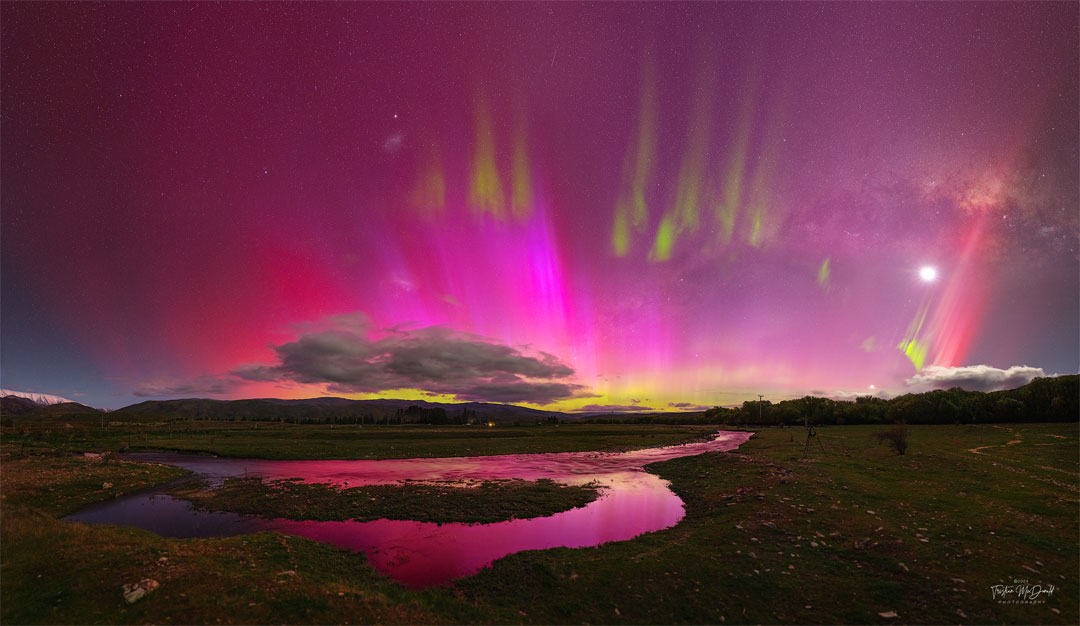
-
2022 September 26 All the Water on Planet Earth Illustration Credit: Jack Cook, Adam Nieman, Woods Hole Oceanographic Institution ; Data ...
-
2021 August 11 Mammatus Clouds over Saskatchewan Image Credit & Copyright: Michael F Johnston Explanation: When do cloud bottoms appe...

